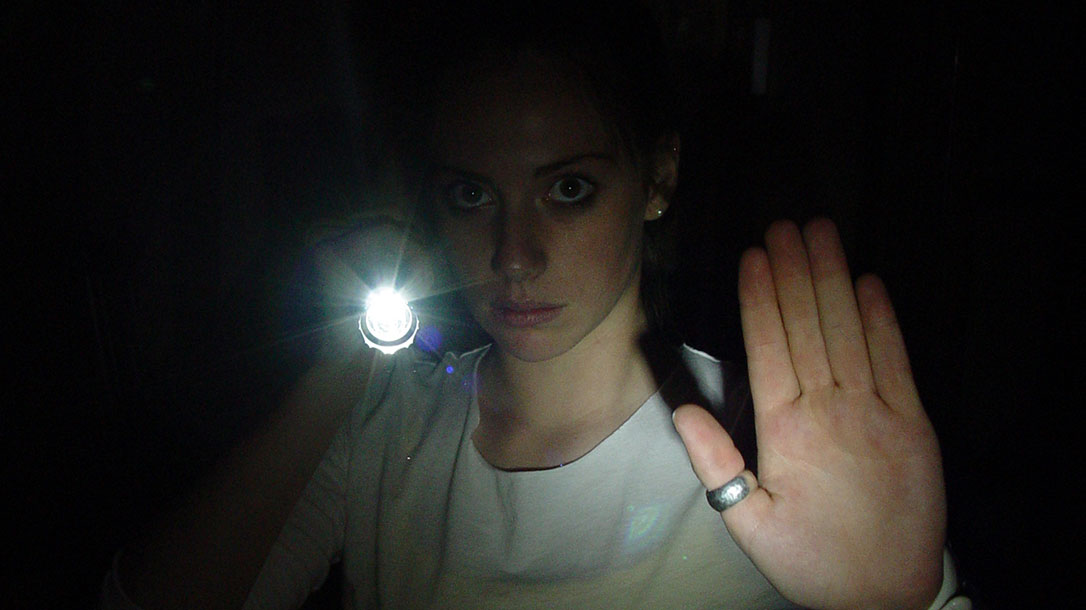When most people think of flashlights and personal defense, their minds automatically gravitate towards low-light shooting. While that’s not necessarily wrong, flashlights are a lot more than headlights for guns. In fact, when backed with the proper mindset and tactics, an LED flashlight is a near-perfect self-defense tool. The key to fully appreciating that fact is understanding and accepting the full spectrum of defensive possibilities.
Using a Flashlight for Self-Defense Starts with Awareness
Awareness is a term used a lot in self-protection training. Typically, it is explained as “situational awareness” and the ability to recognize pre-attack indicators. Awareness, however, requires the ability to see.
In darkness or diminished lighting conditions—where many violent attacks occur—that requires light. In that context, no self-defense tool is more useful than a flashlight.
Advertisement — Continue Reading Below
To understand this level of functionality, imagine leaving a restaurant late at night. To get to your car, you must navigate through an area full of shadows and potential hiding places. By putting a flashlight in your hand, you literally “turn on” your awareness. You also proactively arm yourself in a way that is completely legal.
Under normal circumstances, an assailant lurking in a shadow would have the element of surprise on his side. By using your everyday carry light to eliminate those shadows from a safe distance, you can identify potential threats before you get close to them. In the process, you also send a strong message that you are not “victim material.”
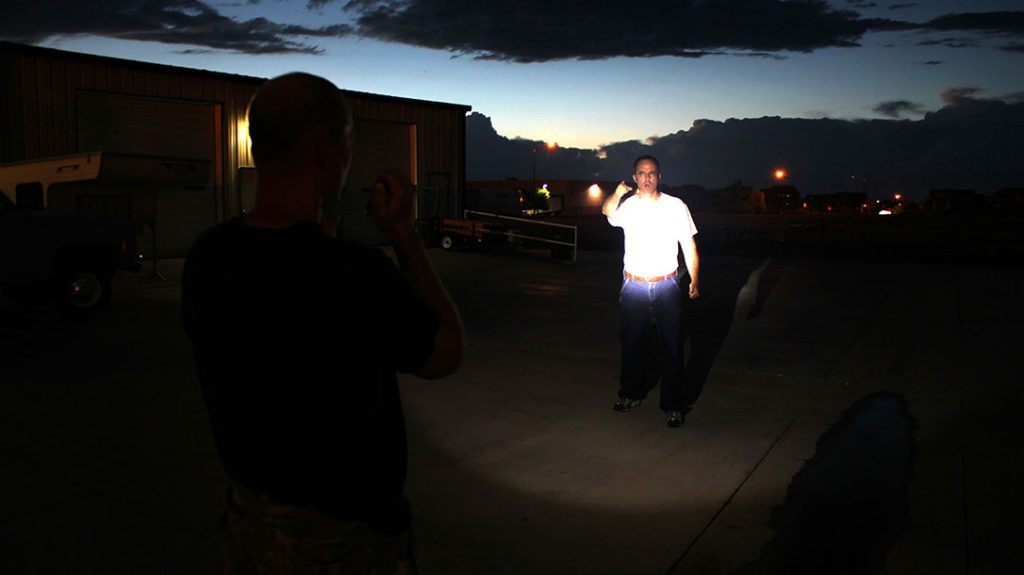
Advertisement — Continue Reading Below
If a potential threat does approach you, the only thing that will let you diagnose that threat from a distance is light. Use the light as needed to assess the individual, his intent, and the presence of any weapons in his hands.
Almost a Projectile
Weapons generally fall into two basic categories: contact weapons and projectile weapons. While a flashlight doesn’t fire a projectile, if bright enough, it can temporarily blind an attacker from a distance.
It typically takes about 25 minutes for the human eye to become fully dark-adapted. When it is, it is 100,000 times more sensitive to light than during normal lighting conditions.
Advertisement — Continue Reading Below
If a threat emerges from a shadow, challenge him from a distance with your light and verbal commands. If he still approaches, shine the light directly in his eyes to temporarily blind him.
Ideally, that will create the opportunity for a safe escape. Choosing a route that includes obstacles or uneven terrain will make it even harder for him to follow you.
A Force Multiplier
A “force multiplier” is any tactical advantage that increases the effectiveness of another weapon or tactic. In that context, using a light to blind an attacker makes him easier to hit.
Advertisement — Continue Reading Below
Using the same scenario described above, let’s assume the threat ignored your verbal commands and is approaching aggressively. As he gets within range, shine the light directly into his eyes.
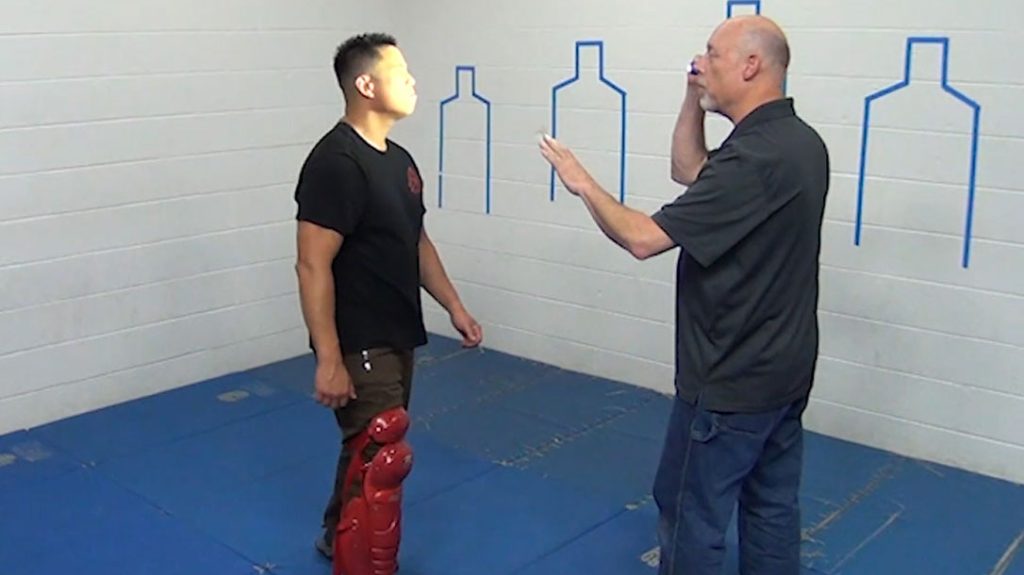
Whether you destroy his night vision or he averts his eyes doesn’t matter. Seize that opportunity to deliver a full-power kick to his shin or groin. This “flash-and-smash” tactic makes your escape much easier and still qualifies as an “unarmed” defensive tactic.
Advertisement — Continue Reading Below
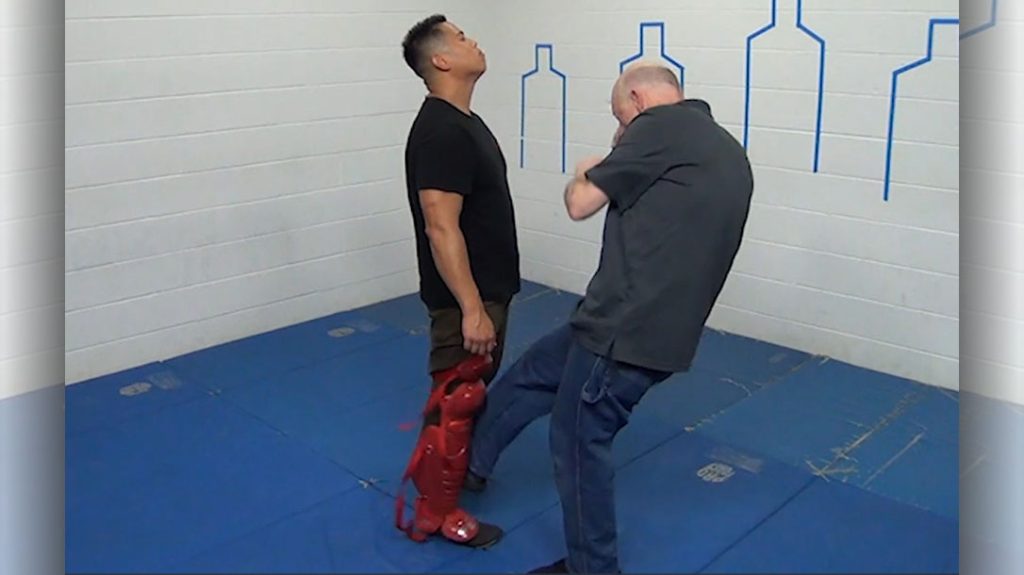
Hammer Time
Because of its size and shape, a good flashlight makes a natural substitute for a yawara stick, Kubotan, or similar “fist-load” self-defense weapon. Unlike those purpose-designed weapons, however, flashlights are first and foremost lighting tools that become an improvised weapon in a pinch.
As such, they can be legally carried everywhere—including non-permissive environments. And, of course, they also have the added benefit of being able to blind your attacker with the bright light before you hit him. The combination of high light output and strong construction make it a great self-defense tool.
Advertisement — Continue Reading Below
While there are martial arts that specialize in fist-load tactics, the basics are pretty easy. Any techniques that strike with the bottom of the closed fist—or hammerfist—easily translate to the use of the light. This is especially true of a tactical flashlight with a toothed bezel, like many in law enforcement carry.
Ideally, use a light with a tailcap-mounted switch. Grip it in your fist with the bezel extending from the little-finger side of your hand. This allows you to activate the light with your thumb and hammer naturally with the bezel. Best of all, unlike your hand, your light is extremely hard and doesn’t feel pain.
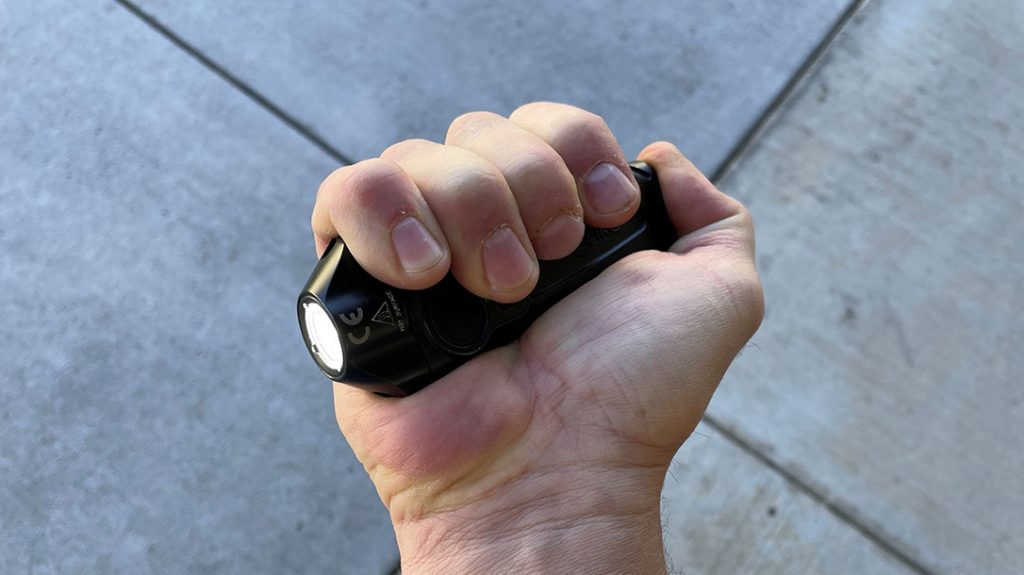
Advertisement — Continue Reading Below
The most basic flashlight striking tactic is called “cycling.” With the light in your right hand, use your left hand to parry, fend, or simply gauge distance. Then, hammer down hard with your right. Immediately repeat the process, focusing on the nose, ears, collarbones, sternum, and any other handy, sensitive areas.
Once you become comfortable with the mechanics of cycling, practice coordinating your movements with the timed activation of the light. Rather than just “parry and strike,” “parry, blind, and strike,” instead. He can’t block what he can’t see coming.
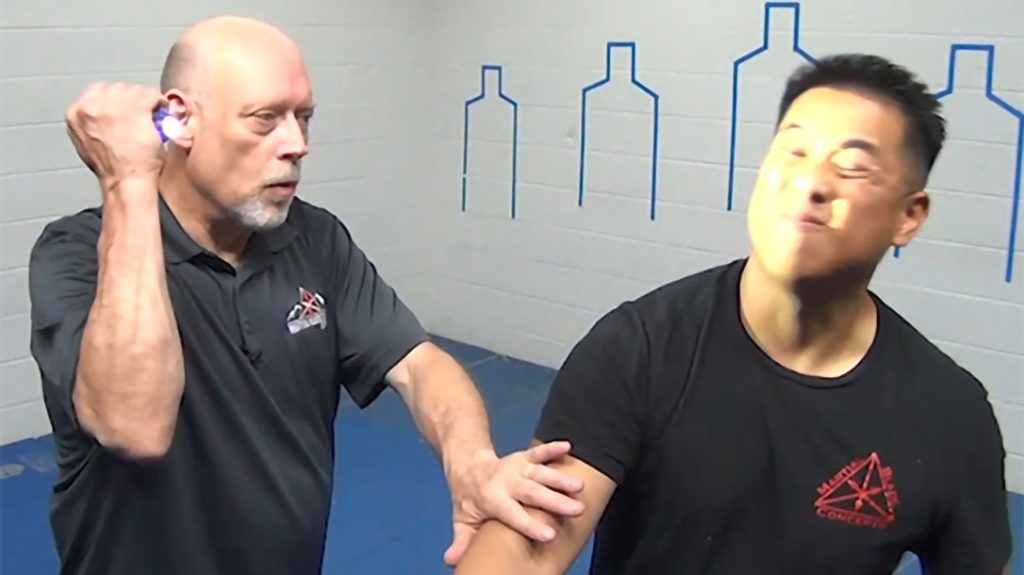
Advertisement — Continue Reading Below
Have a Plan and Work Your Plan
In addition to the basic functionality of the cycling tactic, it’s important to understand the deeper “physiological potential” of its movements. For example, the elliptical motion of the non-weapon hand can easily be more than just a strike or a parry. By altering its path slightly, it can be used to wrap over an attacker’s arm. This immobilizes it and leaves you free to strike with the other hand.
If your attacker grabs the wrist of your light-wielding hand, simply continue your cycling motion. The elliptical action of chambering for another strike will naturally break his grip. Obviously, it will also leave you in the perfect position for another hit.
By “having a plan and working your plan,” you eliminate the “what if” questions that overcomplicate many traditional approaches to self-defense. You also develop a deeper understanding of and confidence in your tactics.
But I’ve Got a Gun (or knife, or OC, or…)!
OK, so you’re a hard-core gun guy. As such, hitting someone with a flashlight while you have a perfectly good pistol on your hip doesn’t make sense. Hitting with your dominant hand—the one that normally does the shooting—makes even less sense.
Well, consider this: Most low-light shooting drills focus on the mechanics of using the gun and the light together. As such, they assume a lethal-force threat. The real world isn’t that clear-cut.
In a real defensive situation, your first task is to figure out what the hell is going on. That diagnostic process is critical, especially in low-light conditions. If it turns out to be a non-life-threatening event, you’re not legally justified to even draw your pistol. The other tactics described above, however, could be extremely appropriate.
Statistically, as many as three out of four violent encounters are not lethal-force attacks. As such, it makes very good sense to explore the full potential of the flashlight as an effective self-defense tool.
